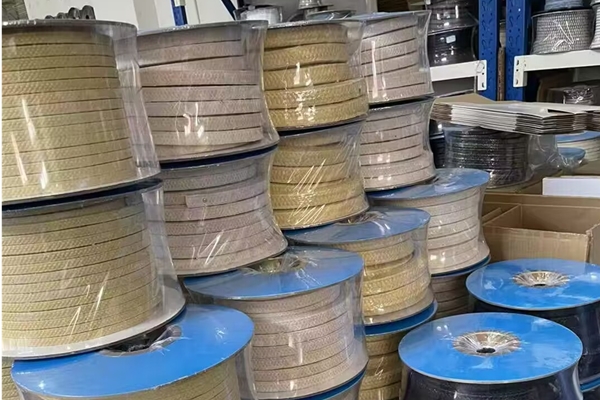The development of the rubber sealing industry is focused on enhancing material performance and applying new technologies to meet increasingly demanding working environments and market needs. Below are some of the key development directions:
1. Trends in Rubber Materials
- Specialty Elastomers Replacing Low-Performance Oil-Resistant Rubber: As working environments become more complex, traditional low-performance oil-resistant rubber is gradually replaced by specialty elastomers. These elastomers offer excellent performance in terms of high-temperature resistance, chemical resistance, and mechanical strength, making them suitable for more demanding applications.
- Low-Friction Modification of Rubber Materials: Reducing the friction coefficient of rubber materials is a key focus of current research. By modifying the surface of the materials or adding lubricants, friction can be significantly reduced, thereby enhancing the lifespan and efficiency of seals and mechanical components.
- Extreme Modification: Extreme modification involves enhancing rubber materials’ resistance to heat, chemicals, and aging to meet the needs of special operating conditions. This type of modification expands the range of applications for rubber materials, particularly in extreme environments.
- Injection Molding of Solid and Liquid Elastomers: The development of injection-moldable solid and liquid elastomers has made manufacturing processes more efficient and precise. This approach can reduce production costs and improve product consistency and quality.
2. Increasing Importance of Engineering Plastics
- Low-Friction Properties of PTFE: Polytetrafluoroethylene (PTFE) is widely used for its excellent low-friction properties, especially in seals where reducing friction is crucial. By combining PTFE with engineering plastics with higher mechanical strength, such as POM or PPS, these composite materials can benefit both, resulting in products with superior wear resistance, low friction, and strong mechanical performance.
- Composite Modification of Engineering Plastics: Composite modification with materials like PTFE further expands the application range of engineering plastics. These composite materials are becoming increasingly important in high-performance applications, such as aerospace, automotive, and mechanical manufacturing.
3. High-Performance Polyurethane Materials
- High-Temperature Polyurethane: Traditional polyurethane materials have limited temperature resistance, but with high-temperature modification techniques, such as those from Parker, polyurethane can now withstand long-term use at 120°C and short-term exposure to temperatures up to 145°C. Additionally, these materials exhibit excellent compression set resistance.
- Self-Lubricating Modification: To reduce the friction coefficient of polyurethane, self-lubricating substances, such as molybdenum disulfide (MoS2), can be infused into the material. This enhances its potential for use in pneumatic and high-speed sealing applications.
- Improved Hydrolysis Resistance: With growing environmental awareness, the demand for seals in water-based environments is increasing. This places higher demands on the hydrolysis resistance of polyurethane materials. By improving the material structure, polyurethane’s resistance to hydrolysis can be significantly enhanced, making it suitable for more water-based applications.
4. Research and Application of Ceramic Seals
- Properties of Engineering Ceramics: Engineering ceramics are an excellent choice for sealing materials due to their outstanding chemical resistance and high-temperature stability. As sealing technology continues to evolve, engineering ceramics are expected to have a bright future in seal components, especially in environments requiring high chemical resistance and temperature stability.
- Polymer-Ceramic Composites: By modifying engineering ceramics with polymers, the resulting “polymer ceramics” exhibit better elasticity and toughness. These advanced materials can better adapt to dynamic working conditions, improving their potential applications in the sealing industry.
5. Nanotechnology Modifications of Traditional Sealing Materials
- Nanotechnology in Rubber Materials: The application of nanotechnology significantly enhances the overall performance of rubber materials. By adding nano-scale materials, such as nano-zinc oxide, the wear resistance, heat resistance, and UV resistance of rubber can be greatly improved. Additionally, the use of nanomaterials can reduce the required amount of traditional fillers, lowering costs.
- Nanomodified TPU: Organic/inorganic nanohybrid technology greatly improves the strength, wear resistance, and high-temperature performance of thermoplastic polyurethane (TPU), increasing its working temperature from 80°C to 120°C, thus enabling it to handle higher-temperature applications.
- Nanoparticle Enhancement of PTFE: Adding nanoparticles like nano-zinc oxide to PTFE can significantly improve its wear resistance, enhancing its performance in high-friction and high-wear environments. This makes it an even more superior sealing material.
These technological advancements indicate that the rubber and plastic sealing industry is moving toward higher performance, smarter solutions, and greater environmental friendliness. The continuous emergence of new materials and technologies will open up more application areas and market opportunities for the sealing industry.




